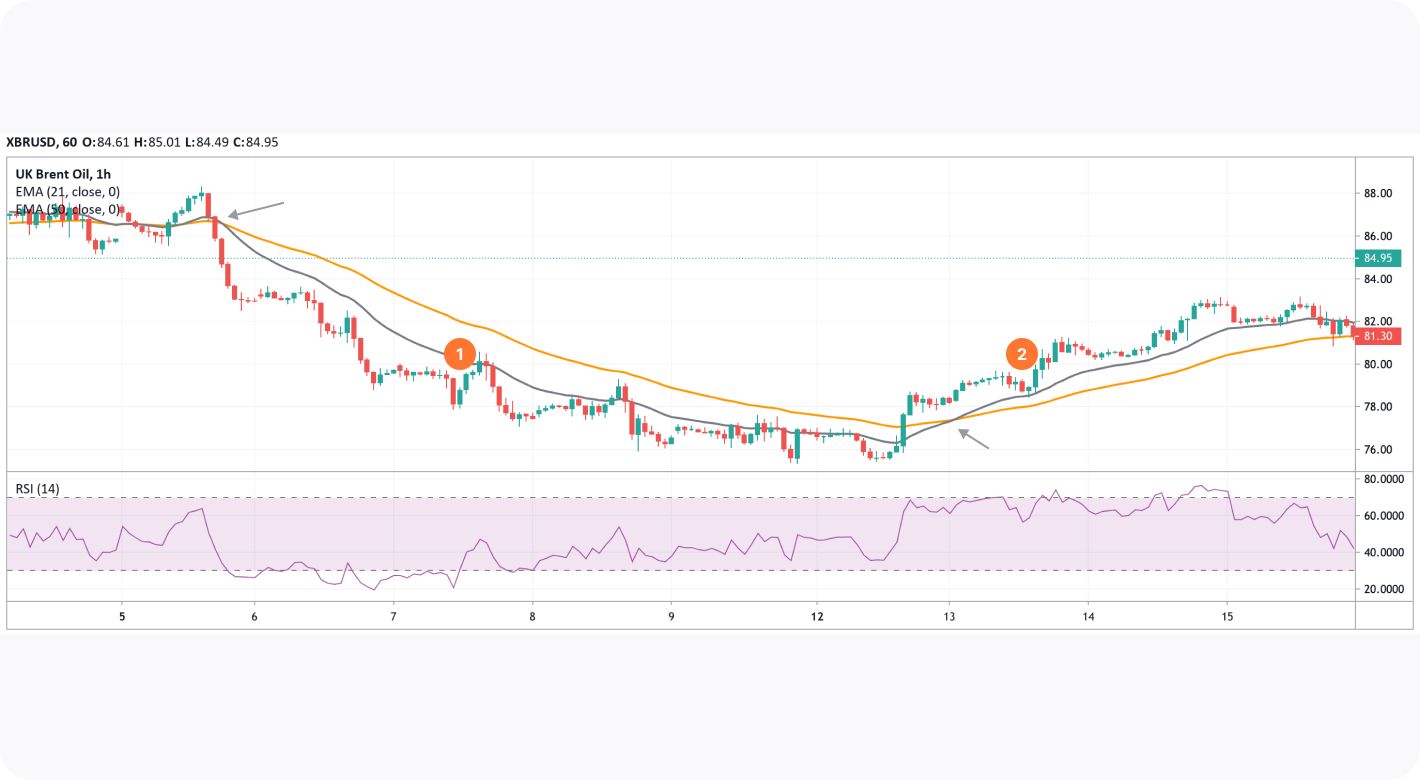Whether you’re a seasoned trader or new to the world of commodities, understanding the various strategies that are available may play an important role in building a successful trading plan. In this article, we’ll explain three types of commodity CFD trading strategies and provide examples of each that you could get started with today.
Commodity Trading Explained
Commodity trading refers to the buying and selling of raw materials and industrial components in the financial markets. While Forex trading deals with currencies, commodities trading primarily deals with physical goods. Typically, commodities fall into four broad categories: energy, metals, agriculture, and livestock and meat.
There are many reasons why people trade commodities. Some trade them as a way of hedging against inflation; this is particularly true of precious metals. Others might use them to take advantage of a booming economy, as demand for energy, metal, and food usually increases in times of economic growth.
Commodities trading is a practice that dates back thousands of years. In the past, early civilisations had to buy and store these goods physically, but nowadays, there are many types of commodity trading available.
In the 21st century, traders don’t need to buy and store goods; they can trade them as a contract for differences (CFDs). More about commodity CFD trading can be found on FXOpen. Also, traders can gain exposure to commodities through stock and exchange-traded fund CFDs, which you’ll also find on our platform.
3 Examples of Commodity CFD Trading Systems
Broadly speaking, commodities CFD trading strategies can be divided into two categories: fundamental, based on economic factors and news, and technical, based on past price movements and market trends. We’ll be looking at three technical strategies.
If you’d like to follow along, you can use a risk-free demo account.
Please note that given the wide spreads usually seen in commodities, it’s preferable to use at least 15-minute charts.
1. Trading Breakouts
A breakout refers to the rapid price movements seen after an area of support or resistance is broken. However, breakout trading may be harder than it seems. A “fakeout” – a move beyond a support or resistance level that quickly reverses – may trap traders and put them in the red. Therefore, some traders prefer to wait for confirmation and enter with a stop-limit order.
- Entry: Once an area of support or resistance has formed (A), price needs to break through and create a swing high or low (1). When the price returns to the level, an opposing high or low should form (2). Then, you may set a stop limit order at the previous high or low (1) to catch the confirmed breakout.
- Stop Loss: The strategy suggests setting a stop above the swing high or low that creates the retest.
- Take Profit: Traders may take profit at a level that gives them a 2:1 risk/reward ratio. Some prefer to trail their stop, while others might move it to breakeven and manually take profits at future areas of support and resistance.
2. Trading Trends

Trend-following strategies have a potential to do well with commodities, given that their trends can last weeks, months, or even years. This specific strategy uses moving averages to confirm the direction of the trend with additional confluence from the Relative Strength Index (RSI).
- Indicators: RSI (14), Exponential Moving Average (EMA) of 21 (grey) and 50 (orange).
- Long Entry: When EMA 21 crosses above EMA 50 and RSI is above 50 (showing bullishness), the first retest of EMA 21 may be considered an entry point (2).
- Short Entry: When EMA 21 crosses below EMA 50 and RSI is below 50 (showing bearishness), you may enter on the first retest of EMA 21 (1).
- Stop Loss: For longs, you could set a stop just below EMA 50 and trail as the moving average moves up. For shorts, you could set a stop just above EMA 50 and trail as the moving average moves down.
- Take Profit: Traders usually start taking profits at a level that gives them a 2:1 reward/ratio. Alternatively, you might take profits when RSI dips below 50 for a long trade or above 50 for a short trade.
3. Trading Ranges

While commodities can be highly volatile, like other assets, they also experience ranges. Range trading is another type of planning and trading of commodities. The use of volatility-based indicators, like Bollinger Bands, alongside an indicator that tells you whether price is trending or ranging, like the Average Directional Index (ADX), may be helpful when trading ranges in commodities.
- Indicators: Bollinger Bands (20, 2), ADX (14, 14).
- Entry: The theory suggests a trader goes long when ADX is below 20 and the price touches the lower Bollinger Band and goes short when ADX is below 20 but the price touches the upper band.
- Stop Loss: There are a couple of ways to set a stop loss here. One way might be to use a set number of pips, or perhaps roughly half the size of the entry candle. Alternatively, a trader could set a standard deviation of the Bollinger Bands to 3 and use the newly-formed bands as a stop.
- Take Profit: Since this is a range trading strategy, it’s expected that positions are closed on touching the opposing band, but a trader can choose to leave some in and move their stop at breakeven to potentially be involved when the range breaks out.
Ready to Start Your Commodities CFD Trading Journey?
Now that you have three potential strategies under your belt, you may start thinking about your next steps. If you’re thinking of testing these strategies on a live market, you may try the TickTrader platform. You’ll have the chance to gain valuable experience with these strategies and see what works best for you.


Be the first to comment